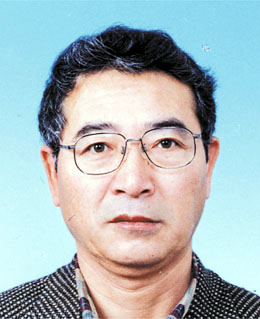
Name : KASAHARA, Junzo
Position : Professor
Division/Center : Earthquake Prediction Research Center
Research Area : Marine Seismology
homepage : http://wwweprc.eri.u-tokyo.ac.jp/~kasa2/

Name : KASAHARA, Junzo
Position : Professor
Division/Center : Earthquake Prediction Research Center
Research Area : Marine Seismology
homepage : http://wwweprc.eri.u-tokyo.ac.jp/~kasa2/
RESEARCH
There are several research topics in our group: Crustal structure study,
Scientific use of submarine cables, Development of ocean
bottom tilt meter, Refraction
tomography, Seismic activity study, and Seismic nature of hydrothermal
zones.
Crustal structure studies have
been jointly done by other universities at the Nankai Trough, the Japan
Trench, east of Japan Sea, and
the Izu-Bonin Trench. In the Nankai
Trough, there are distinct seismic segmentations. One of seismic segment
boundaries is located
at the Shiono Misaki canyon. The
crustal structure shows heterogeneous structure beneath the canyon. The
location also coincides
with the segment boundary for
the Tonankai-Nanaki earthquakes. In the Japan Trench, distinct difference
of waveforms from reflection
arrivals were observed. Those
seem reflected at subduction plate boundary.
Using the GeO-TOC decommissioned
submarine cable, the first cable ocean bottom seismometer station (IZU)
was installed on the
forearc slope of the Izu-Bonin
Trench at 2,800m deep. The data are combined with University Seismic Network
and the data
conversion efforts for IRIS have
been carried out. During Mw6.4 event, which occurred at 80 km deep just
beneath the station showed
co-seismic and post-seismic change
at accelerometers. This observation suggests high possibility of detecting
precursory crustal
deformation associated with large
earthquakes, if precursory changes more than 1 micro-radian exist. For
the GOGC cable between
Guam and Okinawa, a broadband
seismometer is ready to be deployed. A new type ocean bottom tilt-meter
has been developed
using bubble sensor. In the refraction
tomography, it is necessary to compute ray paths and travel times for 2
or 3 D heterogeneous
structures. We developed pseudo-bending
and wave-front methods to calculate ray paths and travel times for the
inhomogeneous
structure and applied those for
refraction tomography at crustal studies. We also applied the method for
reflection arrivals. In the
application of this tomogarphy
to Nankai Trough, theoretical wave-forms using finite difference method
show quite good agreement
with observations. By cooperative
research with JMA, we did seismicity observation at off Akita, Kozu-Zenisu,
off Sanriku and off
Kikai Is. We obtained precise
hypocenter distribution for these areas. Observations at hydrothermal zone
such as Mariana Trough,
TAG area and Okinawa Trough showed
low seismic activity and long period (1-2 min.)pressure change with 12
hours activity cycle.
This observation suggests tide
induced hydrothermal circulation at vent zone.
PUBLICATIONS
Sato, T., G. Fujie, S.Koresawa, J. Kasahara, T. Tanaka, S.Honda,T. Yokota, K.Nakamura, G. Naito, Y. Ishikawa, and T. Hirasawa , Seismic observation at ta seismic gap in the eastern margin of the Japan Sea using ocean bottom seismometers,, Tectonophysics, 302, 1--7, 1999.
Kasahara, ., Y. Shirasaki, and H. Momma, Multidisciplinary geophysical measurements on the ocean floor using decommissioned submarine cable:VENUS project, IEEE Journal of Oceanic Engineering, 25, 1, 111--120, 2000.
Gou Fujie, J. Kasahara, T. Sato, and K. Mochizuki, Travel time and raypath computation:A new method in a heterogeneous medium, Geophysical Exploration(Butsuri-Tansa), 53, 1, 1--11, 2000.
Ito, S., Hino, R., S. Matsumoto, Shibara, H, Shimamura, H., Kanazawa, T., Sato, T., Kasahara, J., and Hasegawa, A., Deep seismic strucuture of the sesimogenic palte boudary in the off-Sanriku region, northeastern Japan, Tectonophysics, 319, 261--271, 2000.
Hino, R., S. Ito, H. Shiobara, H. Shimamura, T. Sato, T. Kanazawa, J. Kasahara, and A. Hasegawa, Aftershock distribution of the 1994 Sanriku-oki earthquake (Mw 7.7) revealed by ocean bottom seismographic observation, J. Geophys. Res., 105, B9, 21,697--21,710, 2000.
G. P. Glasby, and J. Kasahara, Influence of tidal effects on earthquake
activity and its periodicity in diverse geological settings with particular
emphasis on subamirine hydrotheml systems, Earth Science Review, 2000.